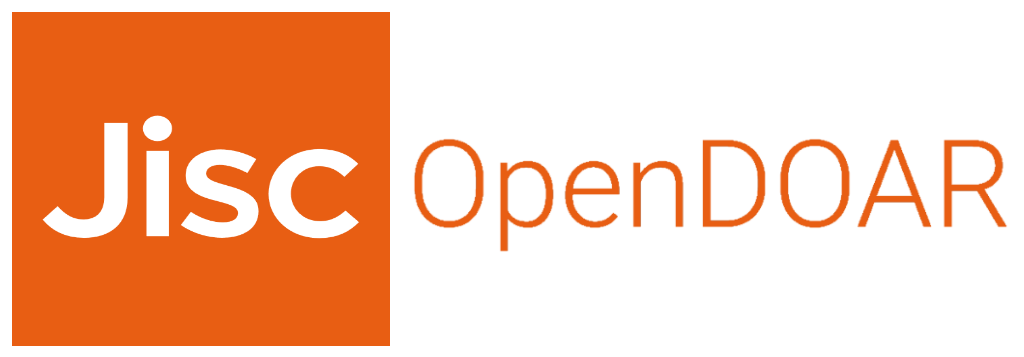| dc.contributor.advisor | Salazar García, Ingrid Lorena | |
| dc.contributor.author | Guarnizo Triana, María Paula | |
| dc.contributor.author | Jiménez Leyton, Danna Valentina | |
| dc.date.accessioned | 2024-07-24T23:17:18Z | |
| dc.date.available | 2024-07-24T23:17:18Z | |
| dc.date.issued | 2024 | |
| dc.identifier.uri | https://repositorio.universidadmayor.edu.co/handle/unicolmayor/7021 | |
| dc.description.abstract | El adenocarcinoma ductal pancreático (PDAC), representa más del 85% de los cánceres de
páncreas, una de las neoplasias malignas más agresivas, con una tasa de supervivencia a 5
años del 2-10%. Sólo del 15 al 20% de los pacientes diagnosticados pueden ser intervenidos
quirúrgicamente, lo que se traduce en que el 80-85% restante de los pacientes sufren una
progresión local de la enfermedad o metástasis. Los pacientes no aptos para la cirugía son
derivados a tratamientos con quimio o radioterapia, los cuales tienen múltiples efectos
secundarios como cansancio, anemias o infecciones, entre otros. El cáncer de páncreas
representa un problema de salud mundial y un desafío significativo para los servicios
sanitarios. Esto se debe principalmente a la falta de biomarcadores fiables para el diagnóstico
y pronóstico temprano del PDAC, así como a la escasez de estrategias terapéuticas eficaces
para su tratamiento. La dificultad para detectar el cáncer de páncreas en sus etapas iniciales
conduce a diagnósticos tardíos y a una baja tasa de supervivencia, lo que subraya la urgente
necesidad de desarrollar terapias más efectivas para abordar este problema. En este sentido
las vesículas extracelulares (VE ́s) representan un potencial terapéutico, éstas son estructuras
liberadas por las células que desempeñan un papel crucial en la comunicación y señalización
celular. El objetivo de este estudio es analizar el uso de las VE ́s con efecto inmunomodulador y
explorar su potencial reprogramación en aplicaciones biomédicas para el tratamiento del
cáncer pancreático mediante una revisión bibliográfica. Se identificaron cuatro temas
principales: tipos de VE ́s y su formación, el papel de las VEs en procesos fisiológicos
normales, su implicación en procesos patológicos y su interacción con las células diana, así
como los métodos para cargar fármacos en ellas para el tratamiento. Se concluye que las VEs
son fundamentales en la comunicación intercelular y que su variabilidad facilita la
transferencia de información entre células tanto por contacto directo como por la internalización del contenido. Dado su origen natural, se plantea su potencial para mejorar el tratamiento, especialmente en el campo de la inmunoterapia, ofreciendo una vía prometedora para abordar el cáncer pancreático. | spa |
| dc.description.tableofcontents | RESUMEN
1. INTRODUCCIÓN
2. OBJETIVOS
2.1 Objetivo General
2.2 Objetivos Específicos
3. ANTECEDENTES
3.1. Tratamiento Del Cáncer De Páncreas
3.2 Resultados De Investigación
3.3. Métodos De Aislamiento De Las Vesículas
4. MARCO TEÓRICO
4.1 Generalidades De La Célula
4.1.1 Membrana Celular
4.1.2 Mecanismos De Transporte
4.1.2.1 Endocitosis/Transporte Activo
4.1.2.1 Exocitosis/Transporte Pasivo
4.1.3 Vesículas Extracelulares
4.2 Páncreas Y Cáncer De Páncreas
4.2.1. Anatomía Del Páncreas
5. METODOLOGÍA
5.1 Tipo Y Alcance Del Estudio
5.2 Universo
5.3 Población
5.4 Muestra
5.5 Busqueda Y Revision De La Información
6. RESULTADOS
6.1 Tipos De Vesículas Extracelulares Y Su Biogénesis
6.1.1 Ectosomas
6.1.1.1 Mecanismos Involucrados En La Biogénesis De Los Ectosomas
6.1.1.2 Proteínas Del Complejo De Clasificación Endosomal (Escrt)
6.1.1.3 Tetraspaninas
6.1.2 Exosomas
6.1.2.1 Mecanismo Escrt-Dependiente
6.1.2.2 Mecanismo Escrt-Independiente
6.1.2.3 Cuerpos Apoptóticos
6.2. Rol De Las Vesículas Extracelulares En Procesos Fisiológicos Normales
6.2.1 Tipos De Vesículas Extracelulares Involucradas En Las Respuestas Inmunitarias
Antitumorales
6.2.1.1 Ve’s Derivadas De Células Dendríticas
6.2.1.2 Ve’s Derivadas De Células T
6.2.1.3 Ve’s Derivadas De Células Natural Killer (Nk)
6.2.1.4 Ve’s Derivadas De Plaquetas
6.3. Vesículas Extracelulares En Procesos Patológicos - Funciones De Las Ve’s En La
Regulación Tumoral
6.3.1 Angiogénesis
6.3.1.2 Interacción De Las Vesículas Extracelulares Con Células Diana
6.3.1.3 Macropinocitosis
6.3.1.4 Fagocitosis
6.3.1.5 Endocitosis Dependiente De Caveola
6.3.1.6 Endocitosis Mediada Por Clatrina
6.3.1.7 Balsa Lipídica
6.3.1.8 Fusión De La Membrana Plasmática
6.4. Vesículas Extracelulares Y Su Capacidad Para Transportar Fármacos
6.4.1 Estrategias De Carga De Fármacos De Clasificación Endógena
6.4.2 Estrategias De Carga De Fármacos De Clasificación Exógena
7. DISCUSIÓN DE RESULTADOS
7.1 Vesículas Extracelulares Enfocadas Al Transporte De Fármacos E Interacción De Las
Vesículas Con Las Células Diana Para Mejorar El Tratamiento Para Cancer De Pancreas
7.2 Exosomas De Las Ve’s Como Biomarcadores Para La Detección Precoz Y Pronóstico
8. CONCLUSIONES | spa |
| dc.format.extent | 71p. | spa |
| dc.format.mimetype | application/pdf | spa |
| dc.language.iso | spa | spa |
| dc.publisher | Universidad Colegio Mayor de Cundinamarca | spa |
| dc.rights | Derechos Reservados - Universidad Colegio Mayor de Cundinamarca, 2024 | spa |
| dc.rights.uri | https://creativecommons.org/licenses/by-nc-nd/4.0/ | spa |
| dc.title | Vesículas extracelulares: moduladores del microambiente tumoral y su camino a la aplicación clínica en el cáncer de páncreas | spa |
| dc.type | Trabajo de grado - Pregrado | spa |
| dc.description.degreelevel | Pregrado | spa |
| dc.description.degreename | Bacteriólogo(a) y Laboratorista Clínico | spa |
| dc.publisher.faculty | Facultad de Ciencias de la Salud | spa |
| dc.publisher.program | Bacteriología y Laboratorio Clínico | spa |
| dc.relation.references | Iannotta, D., et al. Extracellular vesicle therapeutics from plasma and adipose
tissue. Nano Today [Internet]. 2021;39. | spa |
| dc.relation.references | Vergani, E., et al. Extracellular vesicles in anti-tumor immunity. Seminars in
Cancer Biology 86 [Internet]. 2022;64–79. | spa |
| dc.relation.references | Jadli, Anshul S., et al. “Inside(Sight) of Tiny Communicator: Exosome
Biogenesis, Secretion, and Uptake.” Molecular and Cellular Biochemistry.
[Internet]. 2020; vol. 467, no. 1-2, 22, pp. 77–94. | spa |
| dc.relation.references | van Niel G, D’Angelo G, Raposo G. Shedding light on the cell biology of
extracellular vesicles. Nat Rev Mol Cell Biol [Internet]. 2018;19(4):213–28. | spa |
| dc.relation.references | Jin Y, Ma L, Zhang W, Yang W, Feng Q, Wang H. Extracellular signals regulate
the biogenesis of extracellular vesicles. Biol Res [Internet]. 2022;55(1). | spa |
| dc.relation.references | Kalluri R, LeBleu VS. The biology , function , and biomedical applications of
exosomes. Science [Internet]. 2020;367(6478). | spa |
| dc.relation.references | Zhang M, Zang X, Wang M, Li Z, Qiao M, Hu H, et al. Exosome-based
nanocarriers as bio-inspired and versatile vehicles for drug delivery: recent advances
and challenges. J Mater Chem B Mater Biol Med [Internet]. 2019 [citado el 22 de
abril de 2024];7(15):2421–33. | spa |
| dc.relation.references | Abels ER, Breakefield XO. Introduction to extracellular vesicles: Biogenesis,
RNA cargo selection, content, release, and uptake. Cell Mol Neurobiol [Internet].
2016;36(3):301–12 | spa |
| dc.relation.references | Jin Y, Ma L, Zhang W, Yang W, Feng Q, Wang H. Extracellular signals regulate
the biogenesis of extracellular vesicles. Biol Res [Internet]. 2022;55(1). | spa |
| dc.relation.references | Vietri M, Radulovic M, Stenmark H. The many functions of ESCRTs. Nat Rev
Mol Cell Biol [Internet]. 2020;21(1):25–42. | spa |
| dc.relation.references | Migliano SM, Wenzel EM, Stenmark H. Biophysical and molecular mechanisms
of ESCRT functions, and their implications for disease. Curr Opin Cell Biol
[Internet]. 2022;75. | spa |
| dc.relation.references | . Carlton JG, Baum B. Roles of ESCRT-III polymers in cell division across the
tree of life. Curr Opin Cell Biol [Internet]. 2023;85. | spa |
| dc.relation.references | Gros M, Segura E, Rookhuizen DC, Baudon B, Heurtebise-Chrétien S, Burgdorf
N, et al. Endocytic membrane repair by ESCRT-III controls antigen export to the
cytosol during antigen cross-presentation. Cell Rep [Internet]. 2022;40. | spa |
| dc.relation.references | Pfitzner A-K, Moser von Filseck J, Roux A. Principles of membrane remodeling
by dynamic ESCRT-III polymers. Trends Cell Biol [Internet]. 2021;31(10):856–68. | spa |
| dc.relation.references | Jin H, Liu P, Wu Y, Meng X, Wu M, Han J, et al. Exosomal zinc transporter
ZIP4 promotes cancer growth and is a novel diagnostic biomarker for pancreatic
cancer. Cancer Sci [Internet]. 2018;109(9):2946–56. | spa |
| dc.relation.references | Lennon KM, Wakefield DL, Maddox AL, Brehove MS, Willner AN,
Garcia-Mansfield K, et al. Single molecule characterization of individual
extracellular vesicles from pancreatic cancer. J Extracell Vesicles [Internet].
2019;8(1). | spa |
| dc.relation.references | Wang C, Chen Y, Hu S, Liu X. Insights into the function of ESCRT and its role
in enveloped virus infection. Front Microbiol [Internet]. 2023;14. | spa |
| dc.relation.references | Olmos Y. The ESCRT machinery: Remodeling, repairing, and sealing
membranes. Membranes (Basel) [Internet]. 2022;12(6):633. | spa |
| dc.relation.references | Liu J, Wang Y, Cheng Y. The ESCRT‐I components VPS28A and VPS28B are
essential for auxin‐mediated plant development. Plant J [Internet].
2020;104(6):1617–34. | spa |
| dc.relation.references | Toyofuku M, Nomura N, Eberl L. Types and origins of bacterial membrane
vesicles. Nat Rev Microbiol [Internet]. 2019;17(1):13–24.
21. Lara N. Caracterización de las vesículas de membrana de Shewanella vesiculosa
M7(T). RP 2022;49(2):37. | spa |
| dc.relation.references | Gilmore WJ, Johnston EL, Zavan L, Bitto NJ, Kaparakis-Liaskos M.
Immunomodulatory roles and novel applications of bacterial membrane vesicles.
Mol Immunol [Internet]. 2021;134:72–85. | spa |
| dc.relation.references | Zhang Y, Liu Y, Liu H, Tang WH. Exosomes: biogenesis, biologic function and
clinical potential. Cell Biosci [Internet]. 2019;9(1). | spa |
| dc.relation.references | Geng T, Paek SY, Leung E, Chamley LW, Wu Z. Comparing extracellular
vesicles from four different cell origins for intracellular drug delivery to pancreatic
cancer cells: Small or large vesicles? J Drug Deliv Sci Technol [Internet]. 2024;93. | spa |
| dc.relation.references | Tasas de supervivencia del cáncer de páncreas [Internet]. Cancer.org. 2023. | spa |
| dc.relation.references | Soto-Solís R. Abordaje de los tumores sólidos del páncreas. Endoscopia
[Internet]. 2020;32(91):72–5. | spa |
| dc.relation.references | Chapa-Azuela Ó, Corona-Torres MJ, Ayala-Moreno EA, Arroyo-Paredes PS,
Pérez-Torres E, Rodríguez-Báez A, et al. Estado actual del cáncer de páncreas con
oligometástasis. Cir Cir [Internet]. 2023;91(2):262–7. | spa |
| dc.relation.references | Kolbeinsson HM, Chandana S, Wright GP, Chung M. Pancreatic cancer: A
review of current treatment and novel therapies. J Invest Surg [Internet]. 2023;36(1). | spa |
| dc.relation.references | National Cancer Institute. Surveillance, Epidemiology and End Results Program.
2020. | spa |
| dc.relation.references | Torphy RJ, Fujiwara Y, Schulick RD. Pancreatic cancer treatment: better, but a
long way to go. Surg Today [Internet]. 2020;50(10):1117–25. | spa |
| dc.relation.references | Griffin JF, Poruk KE, Wolfgang CL. Pancreatic cancer surgery: past, present, and
future. Chin J Cancer Res [Internet]. 2015;27(4) | spa |
| dc.relation.references | Wood LD, Canto MI, Jaffee EM, Simeone DM. Pancreatic cancer: Pathogenesis,
screening, diagnosis, and treatment. Gastroenterology [Internet].
2022;163(2):386-402.e1. | spa |
| dc.relation.references | Wright MH. Chemical biology tools for protein labelling: insights into cell–cell
communication. Biochem J [Internet]. 2023;480(18):1445–57. | spa |
| dc.relation.references | Zhang H, Xing J, Dai Z, Wang D, Tang D. Exosomes: the key of sophisticated
cell–cell communication and targeted metastasis in pancreatic cancer. Cell Commun
Signal [Internet]. 2022;20(1). | spa |
| dc.relation.references | Dixson AC, Dawson TR, Di Vizio D, Weaver AM. Context-specific regulation
of extracellular vesicle biogenesis and cargo selection. Nat Rev Mol Cell Biol
[Internet]. 2023;24(7):454–76. | spa |
| dc.relation.references | Cirugía para el cáncer de páncreas [Internet]. Cancer.org. 2023. | spa |
| dc.relation.references | Vida después del tratamiento de cáncer de páncreas [Internet]. Cancer.org. 2023. | spa |
| dc.relation.references | Nicoletti A, Negri M, Paratore M, Vitale F, Ainora ME, Nista EC, et al.
Diagnostic and prognostic role of extracellular vesicles in pancreatic cancer: Current
evidence and future perspectives. Int J Mol Sci [Internet]. 2023;24(1):885. | spa |
| dc.relation.references | Dds ML, Serrano C. Conductos pancreáticos. 2023. | spa |
| dc.relation.references | Gurarie M. The anatomy of the pancreas [Internet]. Verywell Health. 2020 | spa |
| dc.relation.references | Grigorescu AC. Pancreatic cancer. Oncolog-hematolog ro 2017. | spa |
| dc.relation.references | Clos-Sansalvador M, Monguió-Tortajada M, Roura S, Franquesa M, Borràs FE.
Commonly used methods for extracellular vesicles’ enrichment: Implications in
downstream analyses and use. Eur J Cell Biol [Internet]. 2022;101(3). | spa |
| dc.relation.references | Monguió-Tortajada M, Gálvez-Montón C, Bayes-Genis A, Roura S, Borràs FE.
Extracellular vesicle isolation methods: rising impact of size-exclusion
chromatography. Cell Mol Life Sci [Internet]. 2019;76(12). | spa |
| dc.relation.references | Liangsupree T, Multia E, Riekkola M-L. Modern isolation and separation
techniques for extracellular vesicles. J Chromatogr A [Internet].
2021;1636(461773):461773 | spa |
| dc.relation.references | Iannotta D, Yang M, Celia C, Di Marzio L, Wolfram J. Extracellular vesicle
therapeutics from plasma and adipose tissue. Nano Today [Internet].
2021;39(101159):101159. | spa |
| dc.relation.references | Giampieri R, Piva F, Occhipinti G, Bittoni A, Righetti A, Pagliaretta S, et al.
Clinical impact of different exosomes’ protein expression in pancreatic ductal
carcinoma patients treated with standard first line palliative chemotherapy. PLoS
One [Internet]. 2019;14(5). | spa |
| dc.relation.references | Luo H, Jin J, Jin J, Lou K, He H, Feng S, et al. Emerging applications of
extracellular vesicles in tumor therapy. Cancer Nanotechnol [Internet]. 2023;14(1). | spa |
| dc.relation.references | Lau C, Kim Y, Chia D, Spielmann N, Eibl G, Elashoff D, et al. Role of
pancreatic cancer-derived exosomes in salivary biomarker development. J Biol
Chem [Internet]. 2013;288(37). | spa |
| dc.relation.references | Sieow BF-L, Wun KS, Yong WP, Hwang IY, Chang MW. Tweak to treat:
Reprograming bacteria for cancer treatment. Trends Cancer [Internet].
2021;7(5):447–64. | spa |
| dc.relation.references | Hu J, Sheng Y, Kwak KJ, Shi J, Yu B, Lee LJ. A signal-amplifiable biochip
quantifies extracellular vesicle-associated RNAs for early cancer detection. Nat
Commun [Internet]. 2017;8(1). | spa |
| dc.relation.references | Marin AM, Mattar SB, Amatuzzi RF, Chammas R, Uno M, Zanette DL, et al.
Plasma exosome-derived microRNAs as potential diagnostic and prognostic
biomarkers in Brazilian pancreatic cancer patients. Biomolecules [Internet].
2022;12(6):769. | spa |
| dc.relation.references | Li M, Zhou H, Yang C, Wu Y, Zhou X, Liu H, et al. Bacterial outer membrane
vesicles as a platform for biomedical applications: An update. J Control Release
[Internet]. 2020;323:253–68. | spa |
| dc.relation.references | Jahromi LP, Fuhrmann G. Bacterial extracellular vesicles: Understanding
biology promotes applications as nanopharmaceuticals. Adv Drug Deliv Rev
[Internet]. 2021;173:125–40. | spa |
| dc.relation.references | Xu Y-F, Hannafon BN, Zhao YD, Postier RG, Ding W-Q. Plasma exosome
miR-196a and miR-1246 are potential indicators of localized pancreatic cancer.
Oncotarget [Internet]. 2017;8(44):77028–40. | spa |
| dc.relation.references | Joshi GK, Deitz-McElyea S, Liyanage T, Lawrence K, Mali S, Sardar R, et al.
Label-free nanoplasmonic-based short noncoding RNA sensing at attomolar
concentrations allows for quantitative and highly specific assay of MicroRNA-10b
in biological fluids and circulating exosomes. ACS Nano [Internet].
2015;9(11):11075–89. | spa |
| dc.relation.references | Zhao Z, Zhao G, Yang S, Zhu S, Zhang S, Li P. The signifcance of exosomal
RNAs in the development, diagnosis, and treatment of pancreatic cancer. Cancer
Cell Int. 2021;21:1–16. | spa |
| dc.relation.references | Zhang W, Campbell DH, Walsh BJ, Packer NH, Liu D, Wang Y. Cancer-derived
small extracellular vesicles: emerging biomarkers and therapies for pancreatic ductal
adenocarcinoma diagnosis/prognosis and treatment. J Nanobiotechnology [Internet].
2022;20(1). | spa |
| dc.relation.references | Liu H, Zhang H, Han Y, Hu Y, Geng Z, Su J. Bacterial extracellular
vesicles-based therapeutic strategies for bone and soft tissue tumors therapy.
Theranostics [Internet]. 2022];12(15):6576–94. | spa |
| dc.relation.references | Kalluri R, McAndrews KM. The role of extracellular vesicles in cancer. Cell
[Internet]. 2023;186(8):1610–26. | spa |
| dc.relation.references | Kalluri R, LeBleu VS. The biology , function , and biomedical applications of
exosomes. Science [Internet]. 2020;367(6478). | spa |
| dc.relation.references | Liu C, He D, Li L, Zhang S, Wang L, Fan Z, et al. Extracellular vesicles in
pancreatic cancer immune escape: Emerging roles and mechanisms. Pharmacol Res
[Internet]. 2022;183. | spa |
| dc.relation.references | Araujo-Abad S, Manresa-Manresa A, Rodríguez-Cañas E, Fuentes- Baile M,
García-Morales P, Mallavia R, et al. New therapy for pancreatic cancer based on
extracellular vesicles. Biomed Pharmacother [Internet]. 2023;162. | spa |
| dc.relation.references | Melo SA, Luecke LB, Kahlert C, Fernandez AF, Gammon ST, Kaye J, et al.
Glypican-1 identifies cancer exosomes and detects early pancreatic cancer. Nature
[Internet]. 2015:177–82. | spa |
| dc.relation.references | Zhang W, Xing J, Liu T, Zhang J, Dai Z, Zhang H, et al. Small extracellular
vesicles: from mediating cancer cell metastasis to therapeutic value in pancreatic
cancer. Cell Commun Signal [Internet]. 2022;20(1). | spa |
| dc.relation.references | Zhang Y-F, Zhou Y-Z, Zhang B, Huang S-F, Li P-P, He X-M, et al. Pancreatic
cancer-derived exosomes promoted pancreatic stellate cells recruitment by
pancreatic cancer. J Cancer [Internet]. 2019;10(18):4397–407. | spa |
| dc.relation.references | Maravillas-Montero JL, Martínez-Cortés I. Los exosomas de las células
presentadoras de antígeno y su papel en la regulación de las respuestas
inmunológicas. Revista Alergia México [Internet]. 2017;64(4):463–76. | spa |
| dc.relation.references | Shibata C, Otsuka M, Seimiya T, Ishigaki K, Miyakawa Y, Kishikawa T, et al.
Smaller extracellular vesicles are released from pancreatic cancer cells by the
alteration of the lipid composition under low glucose conditions. Biochem Biophys
Res Commun [Internet]. 2022;637:314–21. | spa |
| dc.relation.references | Channon LM, Tyma VM, Xu Z, Greening DW, Wilson JS, Perera CJ, et al.
Small extracellular vesicles (exosomes) and their cargo in pancreatic cancer: Key
roles in the hallmarks of cancer. Biochim Biophys Acta Rev Cancer [Internet].
2022;1877(3). | spa |
| dc.relation.references | Pirisinu M, Pham TC, Zhang DX, Hong TN, Nguyen LT, Le MTN. Extracellular
vesicles as natural therapeutic agents and innate drug delivery systems for cancer
treatment: Recent advances, current obstacles, and challenges for clinical translation.
Semin Cancer Biol [Internet]. 2022;80:340–55. | spa |
| dc.relation.references | Fyfe J, Casari I, Manfredi M, Falasca M. Role of lipid signalling in extracellular
vesicles-mediated cell-to-cell communication. Cytokine Growth Factor Rev
[Internet]. 2023;73:20–6. | spa |
| dc.relation.references | Iqbal MJ, Kabeer A, Abbas Z, Siddiqui HA, Calina D, Sharifi-Rad J, et al.
Interplay of oxidative stress, cellular communication and signaling pathways in
cancer. Cell Commun Signal [Internet]. 2024;22(1). | spa |
| dc.relation.references | Broadbent LM, Rothnie AJ, Simms J, Bill RM. Classifying tetraspanins: A
universal system for numbering residues and a proposal for naming structural motifs
and subfamilies. Biochim Biophys Acta Biomembr [Internet]. 2024;1866(3). | spa |
| dc.relation.references | Natale G, Bocci G. Discovery and development of tumor angiogenesis assays.
En: Methods in Molecular Biology. New York, NY: Springer US; 2023. p. 1–37. | spa |
| dc.relation.references | Lugano R, Ramachandran M, Dimberg A. Tumor angiogenesis: causes,
consequences, challenges and opportunities. Cell Mol Life Sci [Internet].
2020;77(9):1745–70 | spa |
| dc.relation.references | Goral V. Pancreatic cancer: Pathogenesis and diagnosis. Asian Pac J Cancer Prev
[Internet]. 2015;16(14):5619–24. | spa |
| dc.relation.references | McGuigan A, Kelly P, Turkington RC, Jones C, Coleman HG, McCain RS.
Pancreatic cancer: A review of clinical diagnosis, epidemiology, treatment and
outcomes. World J Gastroenterol [Internet]. 2018;24(43):4846–61. | spa |
| dc.relation.references | Stoffel EM, Brand RE, Goggins M. Pancreatic cancer: Changing epidemiology
and new approaches to risk assessment, early detection, and prevention.
Gastroenterology [Internet]. 2023;164(5):752–65. | spa |
| dc.relation.references | Wang Y, Xiao T, Zhao C, Li G. The regulation of exosome generation and
function in physiological and pathological processes. Int J Mol Sci [Internet].
2023;25(1):255. | spa |
| dc.relation.references | Wang C, Li N, Li Y, Hou S, Zhang W, Meng Z, et al. Engineering a HEK-293T
exosome-based delivery platform for efficient tumor-targeting
chemotherapy/internal irradiation combination therapy. J Nanobiotechnology
[Internet]. 2022;20(1). | spa |
| dc.relation.references | Zeng H, Guo S, Ren X, Wu Z, Liu S, Yao X. Current strategies for exosome
cargo loading and targeting delivery. Cells [Internet]. 2023;12(10):1416. | spa |
| dc.relation.references | Kciuk M, Gielecińska A, Mujwar S, Kołat D, Kałuzińska-Kołat Ż, Celik I, et al.
Doxorubicin—an agent with multiple mechanisms of anticancer activity. Cells
[Internet]. 2023 [citado el 26 de abril de 2024];12(4):659. | spa |
| dc.relation.references | Centelles JJ, Imperial S. Paclitaxel. Descubrimiento, propiedades y uso clínico.
Offarm [Internet]. 2010 [citado el 26 de abril de 2024];29(4):68–75. | spa |
| dc.relation.references | Cabeza L, Perazzoli G, Peña M, Cepero A, Luque C, Melguizo C, et al. Cancer
therapy based on extracellular vesicles as drug delivery vehicles. J Control Release
[Internet]. 2020;327:296–315. | spa |
| dc.relation.references | Zhou X, Jia Y, Mao C, Liu S. Small extracellular vesicles: Non-negligible
vesicles in tumor progression, diagnosis, and therapy. Cancer Lett [Internet].
2024;580(216481):216481. | spa |
| dc.relation.references | Pang X, He X, Qiu Z, Zhang H, Xie R, Liu Z, et al. Targeting integrin pathways:
mechanisms and advances in therapy. Signal Transduct Target Ther [Internet].
2023;8(1):1–42 | spa |
| dc.relation.references | Jankovičová J, Sečová P, Michalková K, Antalíková J. Tetraspanins, more than
markers of extracellular vesicles in reproduction. Int J Mol Sci [Internet].
2020;21(20):7568. | spa |
| dc.relation.references | Shimada T, Yasuda S, Sugiura H, Yamagata K. Syntenin: PDZ protein regulating
signaling pathways and cellular functions. Int J Mol Sci [Internet].
2019;20(17):4171. | spa |
| dc.relation.references | Batrakova EV, Kim MS. Using exosomes, naturally-equipped nanocarriers, for
drug delivery. J Control Release [Internet]. 2015;219:396–405. | spa |
| dc.relation.references | Yong T, Li X, Wei Z, Gan L, Yang X. Extracellular vesicles-based drug delivery
systems for cancer immunotherapy. J Control Release [Internet]. 2020;328:562–74. | spa |
| dc.relation.references | Chiou N-T, Kageyama R, Ansel KM. Selective export into extracellular vesicles
and function of tRNA fragments during T cell activation. Cell Rep [Internet]. 2018. | spa |
| dc.relation.references | Zhang C, Gao F, Teng F, Zhang M. Fas/FasL complex promotes proliferation and
migration of brain endothelial cells via FADD–FLIP–TRAF–NF-κB pathway. Cell
Biochem Biophys. 2015;71(3):1319–23. | spa |
| dc.relation.references | Marques RE, Guabiraba R, Russo RC, Teixeira MM. Targeting CCL5 in
inflammation. Expert Opin Ther Targets [Internet]. 2013;17(12):1439–60. | spa |
| dc.relation.references | Franks SE, Wolfson B, Hodge JW. Natural born killers: NK cells in cancer
therapy. Cancers (Basel) [Internet]. 2020;12(8):2131. | spa |
| dc.relation.references | Taborda NA, Hernández JC, Montoya CJ, Rugeles MT. Las células natural killer
y su papel en la respuesta inmunitaria durante la infección por el virus de la
inmunodeficiencia humana tipo-1. Inmunología. 2014;33(1):11–20. | spa |
| dc.relation.references | Tao S-C, Guo S-C, Zhang C-Q. Platelet-derived extracellular vesicles: An
emerging therapeutic approach. Int J Biol Sci. 2017;13(7):828–34 | spa |
| dc.relation.references | Todorova D, Simoncini S, Lacroix R, Sabatier F, Dignat-George F. Extracellular
vesicles in angiogenesis. Circ Res. 2017;120(10):1658–73. | spa |
| dc.relation.references | Kay RR. Macropinocytosis: Biology and mechanisms. Cells Dev.
2021;168(203713):203713. | spa |
| dc.relation.references | Cooper JA, Chow C, Bernfield MR, Andrew Staehelin L, Slack JMW, Alberts
BM, et al. cell. En: Encyclopedia Britannica. 2024. | spa |
| dc.relation.references | What is a cell? [Internet]. Nature.com. 2024. | spa |
| dc.relation.references | Ali O, Szabó A. Review of eukaryote cellular membrane lipid composition,
with special attention to the fatty acids. Int J Mol Sci [Internet]. 2023;24(21):15693. | spa |
| dc.relation.references | Harayama T, Riezman H. Understanding the diversity of membrane lipid
composition. Nat Rev Mol Cell Biol [Internet]. 2018;19(5):281–96. | spa |
| dc.relation.references | Watson H. Biological membranes. Essays Biochem [Internet]. 2015;59:43–69. | spa |
| dc.relation.references | Seufferlein T, Mayerle J. Precision medicine in pancreatic cancer — fact or
fiction? Nat Rev Gastroenterol Hepatol [Internet]. 2016;13(2):74–5. | spa |
| dc.relation.references | Gui J-C, Yan W-L, Liu X-D. CA19-9 and CA242 as tumor markers for the
diagnosis of pancreatic cancer: a meta-analysis. Clin Exp Med [Internet].
2014;14(2):225–33. | spa |
| dc.relation.references | Stillwell W. Membrane Transport. En: An Introduction to Biological
Membranes. Elsevier; 2016. p. 423–51. | spa |
| dc.relation.references | Liang K, Liu F, Fan J, Sun D, Liu C, Lyon CJ, et al. Nanoplasmonic
quantification of tumour-derived extracellular vesicles in plasma microsamples for
diagnosis and treatment monitoring. Nat Biomed Eng [Internet]. 2017;1(4):1–11
107. PEDIAMÉCUM AEP. GEMCITABINA. [Internet]. 2020. | spa |
| dc.relation.references | Hospital de Cabueñes. Servicio de Farmacia. CAPECITABINA informe para la
comisión de Farmacia y Terapéutica del Hospital de Cabueñes. [Internet]. 2012. | spa |
| dc.relation.references | Área de Farmacia Oncológica del Servicio de Farmacia. Hospital Universitario
de Getafe. Esquema FOLFIRINOX [Internet]. 2021 | spa |
| dc.relation.references | Uchida, Yuichiro, et al. “Postoperative Pancreatic Fistulas Decrease the
Survival of Pancreatic Cancer Patients Treated with Surgery after Neoadjuvant
Chemoradiotherapy: A Retrospective Analysis.” Surgical Oncology, vol. 35, 1 Dec.
2020, pp. 527–532, | spa |
| dc.relation.references | Chung, Eric M, et al. “Patterns of Failure in Patients with Borderline
Resectable/Locally Advanced Pancreatic Cancer after Preoperative Chemotherapy
and Stereotactic Body Radiation Therapy.” Advances in Radiation Oncology, 1 Feb.
2024, pp. 101471–101471. | spa |
| dc.relation.references | Sun, Haoyao, et al. “Pancreatic Ductal Cell-Derived Extracellular Vesicles Are
Effective Drug Carriers to Enhance Paclitaxel’s Efficacy in Pancreatic Cancer Cells
through Clathrin-Mediated Endocytosis.” International Journal of Molecular
Sciences, vol. 23, no. 9, 26 Apr. 2022, p. 4773, | spa |
| dc.relation.references | Brozos-Vázquez, Elena, et al. “Pancreatic Cancer Biomarkers: A Pathway to
Advance in Personalized Treatment Selection.” Cancer Treatment Reviews, vol. 125,
1 Apr. 2024, p. 102719. | spa |
| dc.relation.references | Lewis, Jean M., et al. “Integrated Analysis of Exosomal Protein Biomarkers on
Alternating Current Electrokinetic Chips Enables Rapid Detection of Pancreatic
Cancer in Patient Blood.” ACS Nano, vol. 12, no. 4, 23 Mar. 2018, pp. 3311–3320,
https://doi.org/10.1021/acsnano.7b08199. | spa |
| dc.rights.accessrights | info:eu-repo/semantics/closedAccess | spa |
| dc.rights.creativecommons | Atribución-NoComercial-SinDerivadas 4.0 Internacional (CC BY-NC-ND 4.0) | spa |
| dc.subject.proposal | Vesículas de membrana externa | spa |
| dc.subject.proposal | Cáncer de páncreas | spa |
| dc.subject.proposal | Quimioterapia | spa |
| dc.subject.proposal | Radioterapia | spa |
| dc.subject.proposal | Vesículas como transportadores de medicamentos | spa |
| dc.subject.proposal | Exosomas | spa |
| dc.subject.proposal | Estrategias terapéuticas | spa |
| dc.type.coar | http://purl.org/coar/resource_type/c_7a1f | spa |
| dc.type.coarversion | http://purl.org/coar/version/c_970fb48d4fbd8a85 | spa |
| dc.type.content | Text | spa |
| dc.type.driver | info:eu-repo/semantics/bachelorThesis | spa |
| dc.type.redcol | https://purl.org/redcol/resource_type/TP | spa |
| dc.type.version | info:eu-repo/semantics/publishedVersion | spa |
| dc.rights.coar | http://purl.org/coar/access_right/c_14cb | spa |



















